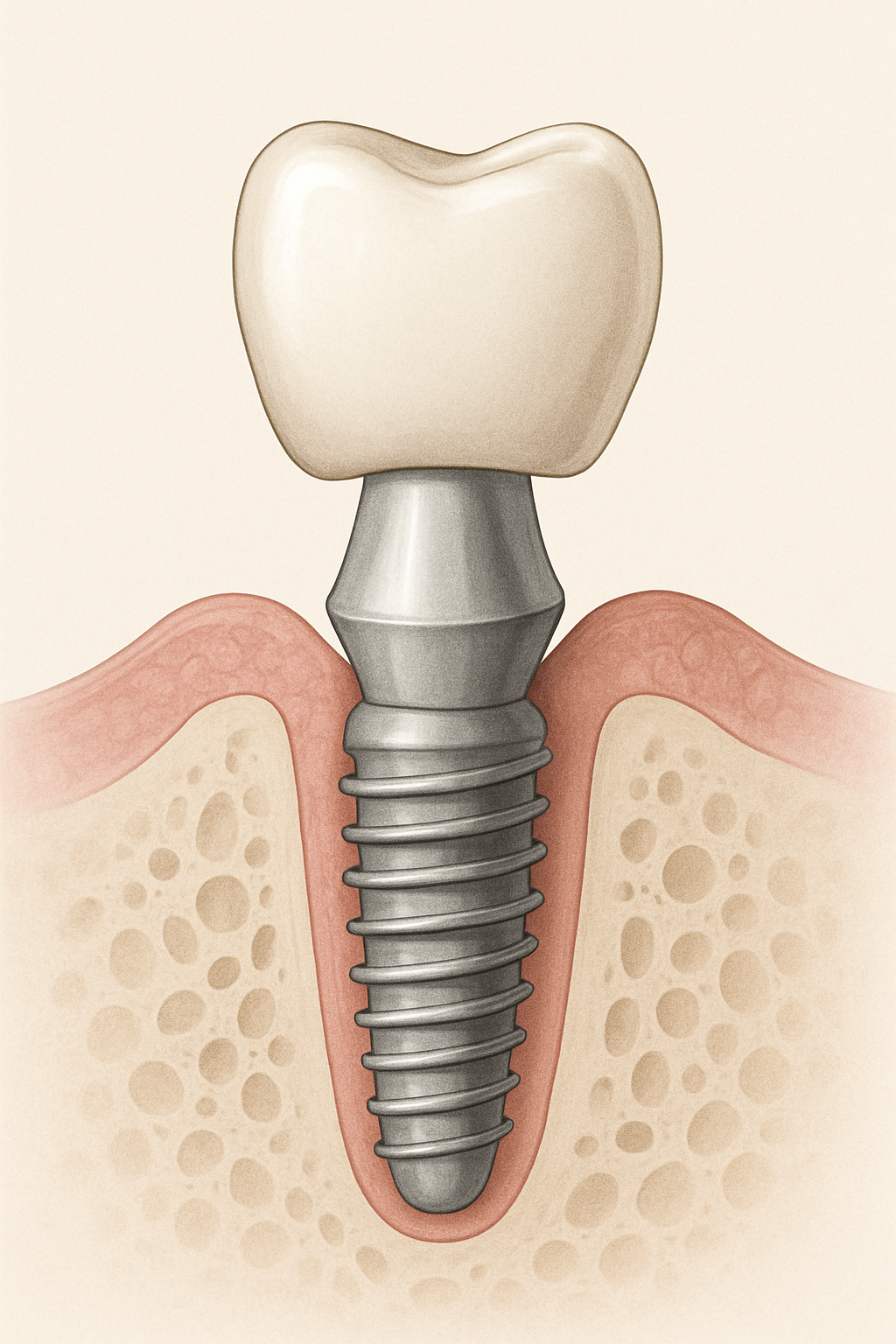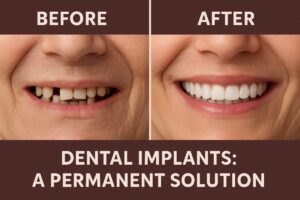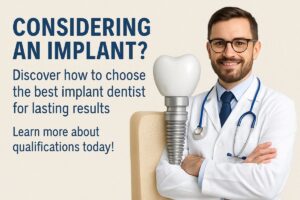Answering the question what is implant in plain language: an implant is a small titanium post placed in the jaw that replaces a tooth root. It anchors a crown, bridge, or denture so the replacement tooth looks, feels, and works like a natural tooth. Implants help people with one or more missing teeth, loose dentures, or failing teeth who want a long-term, stable solution.
This guide covers the basics you need to know about what is implant: a simple definition, the main types, the step-by-step procedure, who is a good candidate, benefits and risks, cost and timeline, aftercare, and how to choose the right provider. Read on for clear, practical next steps.
Answering “what is implant”
An implant has three main parts: the implant (the titanium post placed in the jaw), the abutment (a connector attached to the implant), and the crown (the visible tooth replacement). Together these parts replace the missing root and tooth so you can chew, speak, and smile with confidence.
Types of dental implants
Endosteal (most common)
Endosteal implants are root-form implants placed directly in the jawbone. They are used for single teeth, multiple teeth with individual implants, or to support bridges. Most patients who have enough bone get this type.
Subperiosteal and mini implants
Subperiosteal implants sit on top of the jawbone under the gum and are used when there is not enough bone for endosteal implants. Mini implants are smaller and sometimes used for narrow spaces or as a temporary support for dentures. These options can avoid bone grafting but may have trade-offs in long-term stability.
Full-arch solutions (All-on-4 / All-on-6)
Full-arch implant systems use a few implants to support an entire upper or lower set of teeth. These implant-supported dentures are an efficient option for people replacing many teeth or converting from loose dentures to fixed teeth.
The typical implant procedure (step-by-step)
Consultation & imaging
First you’ll have an exam with X-rays or a CBCT scan to check bone and plan placement. A treatment plan will show the number of implants, any prep needed, and the timeline.
Surgical placement
During surgery the implant is placed in the jaw. Most people have local anesthesia with optional sedation. Initial healing takes a few days to two weeks for soft tissues to settle.
Osseointegration and restoration
Over several months the bone bonds to the titanium implant (osseointegration). Once integrated, the abutment is attached and a final crown, bridge, or denture is fitted.
Who is a good candidate?
Good candidates are healthy adults with adequate jaw bone and good oral hygiene. Non-smokers do best, though smokers can still be treated if they quit. Some patients need bone grafts or sinus lifts before implants. If implants aren’t suitable, alternatives include fixed bridges or removable dentures.
Benefits and risks
- Benefits: strong chewing ability, natural look, bone preservation, and long-term durability.
- Risks/complications: infection, failed integration, extra treatment needs (grafts), cost, and a healing period before final restoration.
Cost and timeline overview
From consult to final crown usually takes several months (commonly 3–6 months, sometimes faster with immediate-load protocols). Costs vary widely: a single implant typically costs less than full-arch reconstruction. Financing and some insurance plans may help; ask your provider for an itemized estimate.
Aftercare and what to expect long-term
Expect some soreness after surgery controlled by pain meds and ice. Maintain excellent oral hygiene—brushing, flossing, and regular cleanings—and attend follow-up visits. With proper care, implants can last many years or decades.
How to choose the right provider
Look for a provider with implant training and experience, clear before-and-after photos, and positive patient reviews. Ask about diagnostic tools like CBCT, guided surgery, and sedation options if you prefer extra comfort. Sedation & Implant Dentistry serves Fort Wayne and Auburn, Indiana, and Dr. David Painter brings decades of implant and sedation experience, advanced training, and state-of-the-art technology to patient care.
If you still wonder what is implant for your situation, the next step is a consultation. Contact the practice to schedule an exam, get a personalized plan, and receive a quote for your treatment.






